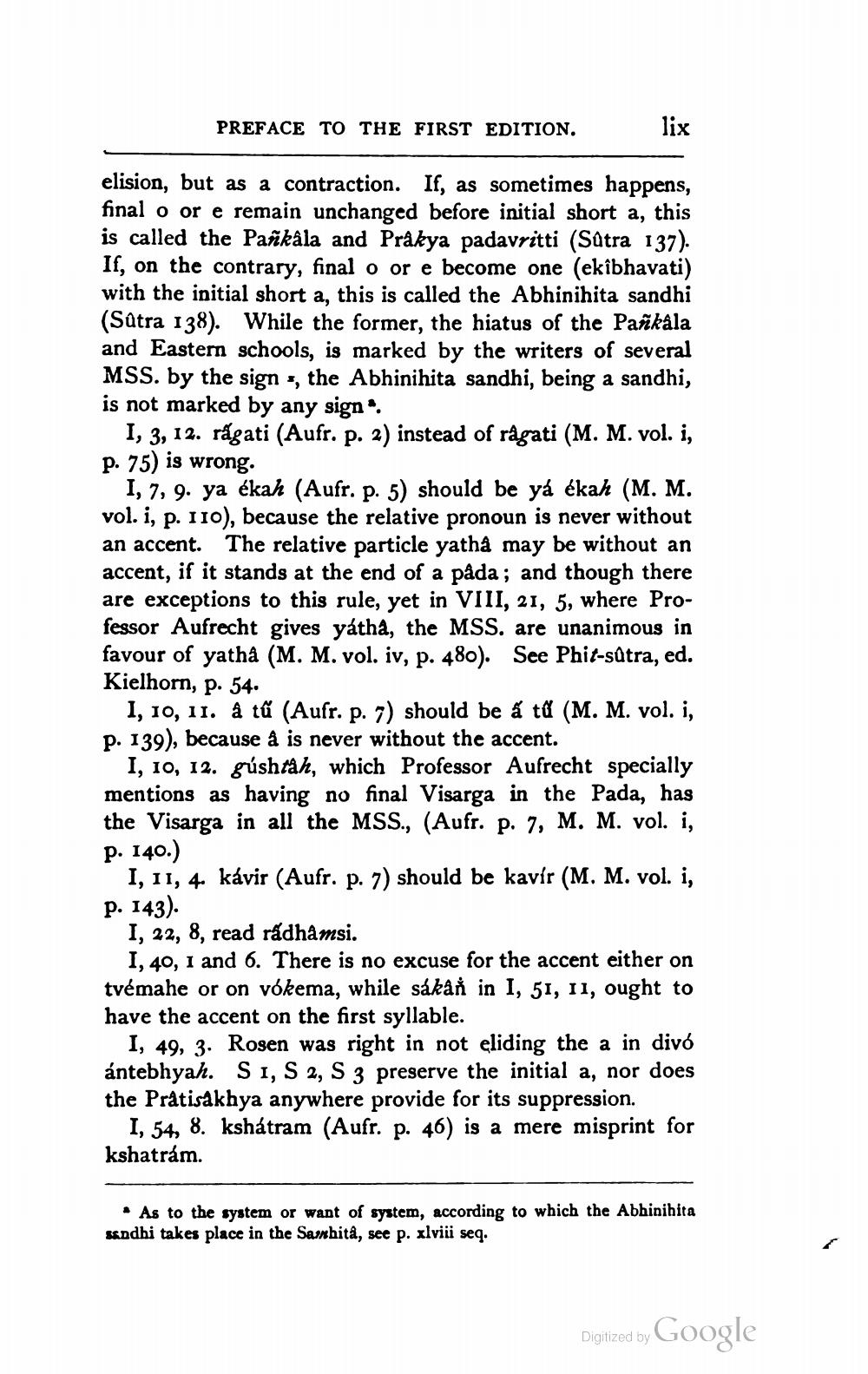________________
PREFACE TO THE FIRST EDITION.
lix
elision, but as a contraction. If, as sometimes happens, final o or e remain unchanged before initial short a, this is called the Pañkâla and Prakya padavritti (Sûtra 137). If, on the contrary, final o or e become one (ekîbhavati) with the initial short a, this is called the Abhinihita sandhi (Sûtra 138). While the former, the hiatus of the Pañkâla and Eastern schools, is marked by the writers of several MSS. by the sign, the Abhinihita sandhi, being a sandhi, is not marked by any sign".
I, 3, 12. ragati (Aufr. p. 2) instead of rågati (M. M. vol. i, p. 75) is wrong.
I, 7, 9. ya ékah (Aufr. p. 5) should be yá ékah (M. M. vol. i, p. 110), because the relative pronoun is never without an accent. The relative particle yathâ may be without an accent, if it stands at the end of a pâda; and though there are exceptions to this rule, yet in VIII, 21, 5, where Professor Aufrecht gives yátha, the MSS. are unanimous in favour of yatha (M. M. vol. iv, p. 480). See Phit-sûtra, ed. Kielhorn, p. 54.
I, 10, 11. â tu (Aufr. p. 7) should be a tű (M. M. vol. i, p. 139), because â is never without the accent.
I, 10, 12. gúshtah, which Professor Aufrecht specially mentions as having no final Visarga in the Pada, has the Visarga in all the MSS., (Aufr. p. 7, M. M. vol. i, p. 140.)
I, 11, 4. kávir (Aufr. p. 7) should be kavír (M. M. vol. i, p. 143).
I, 22, 8, read rádhâmsi.
I, 40, 1 and 6. There is no excuse for the accent either on tvémahe or on vókema, while sákâň in I, 51, 11, ought to have the accent on the first syllable.
I, 49, 3. Rosen was right in not eliding the a in divó ántebhyah. S1, S2, S3 preserve the initial a, nor does the Prâtisakhya anywhere provide for its suppression.
I, 54, 8. kshátram (Aufr. p. 46) is a mere misprint for kshatrám.
As to the system or want of system, according to which the Abhinihita sandhi takes place in the Samhitâ, see p. xlviii seq.
Digitized by Google




